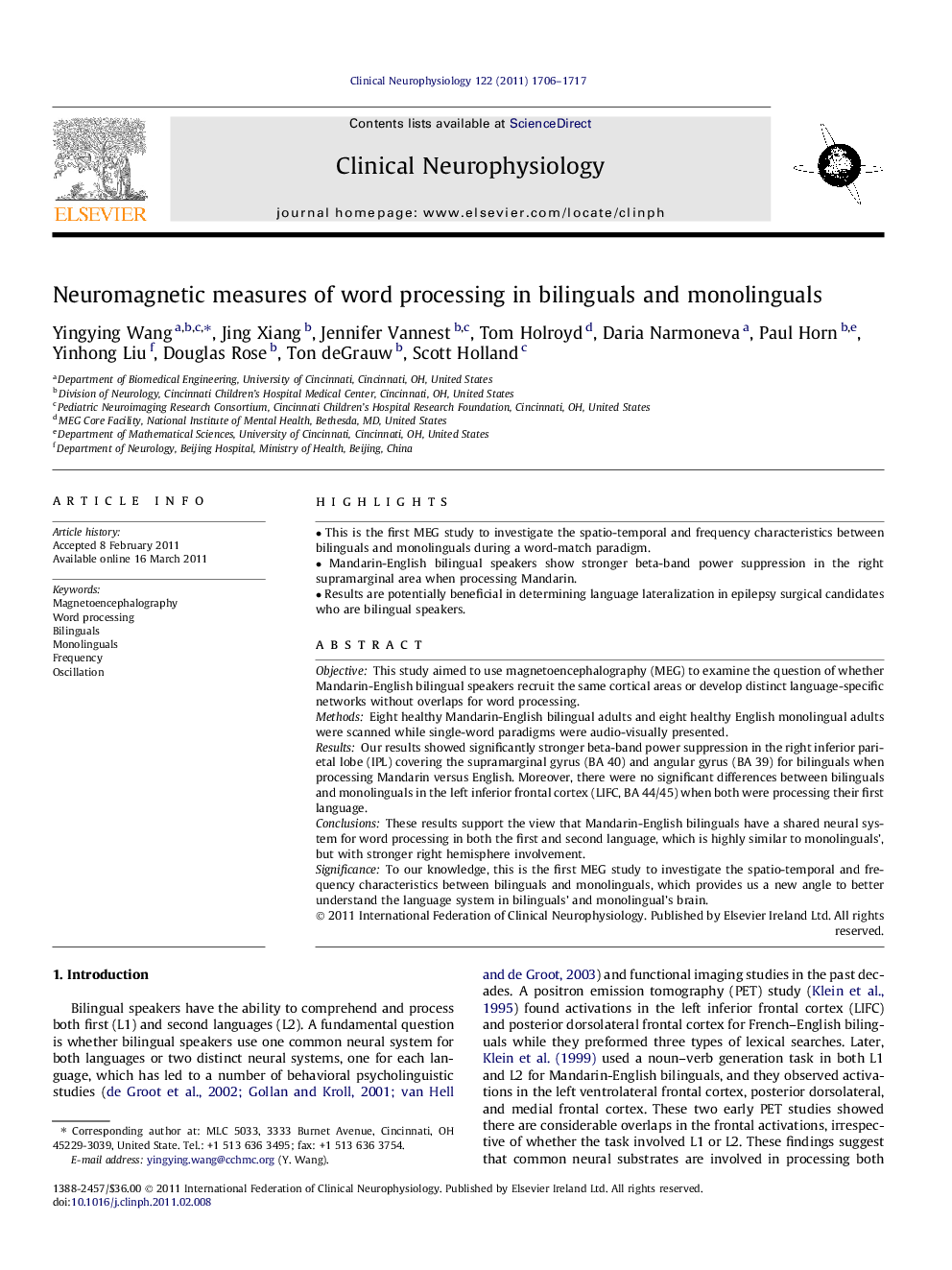| Article ID | Journal | Published Year | Pages | File Type |
|---|---|---|---|---|
| 3045777 | Clinical Neurophysiology | 2011 | 12 Pages |
ObjectiveThis study aimed to use magnetoencephalography (MEG) to examine the question of whether Mandarin-English bilingual speakers recruit the same cortical areas or develop distinct language-specific networks without overlaps for word processing.MethodsEight healthy Mandarin-English bilingual adults and eight healthy English monolingual adults were scanned while single-word paradigms were audio-visually presented.ResultsOur results showed significantly stronger beta-band power suppression in the right inferior parietal lobe (IPL) covering the supramarginal gyrus (BA 40) and angular gyrus (BA 39) for bilinguals when processing Mandarin versus English. Moreover, there were no significant differences between bilinguals and monolinguals in the left inferior frontal cortex (LIFC, BA 44/45) when both were processing their first language.ConclusionsThese results support the view that Mandarin-English bilinguals have a shared neural system for word processing in both the first and second language, which is highly similar to monolinguals’, but with stronger right hemisphere involvement.SignificanceTo our knowledge, this is the first MEG study to investigate the spatio-temporal and frequency characteristics between bilinguals and monolinguals, which provides us a new angle to better understand the language system in bilinguals’ and monolingual’s brain.
Research highlights► This is the first MEG study to investigate the spatio-temporal and frequency characteristics between bilinguals and monolinguals during a word-match paradigm. ► Mandarin-English bilingual speakers show stronger beta-band power suppression in the right supramarginal area when processing Mandarin. ► Results are potentially beneficial in determining language lateralization in epilepsy surgical candidates who are bilingual speakers.
